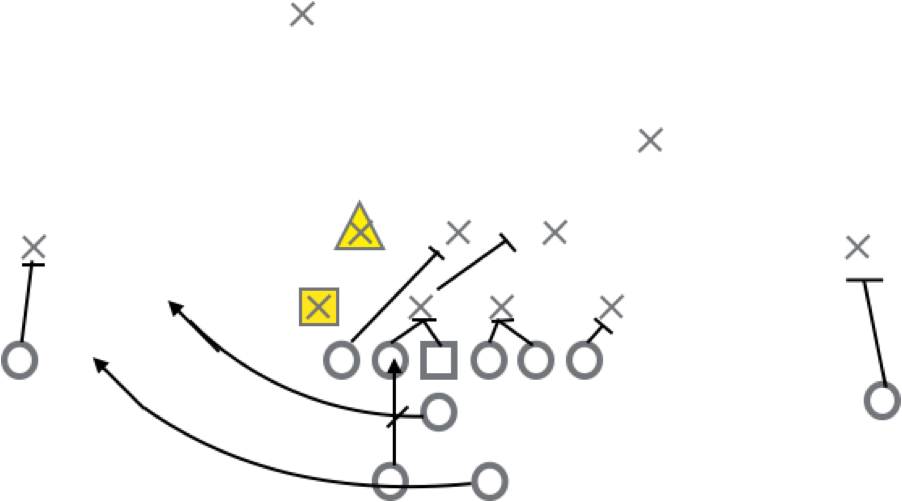It’s great to be back. Not only for me personally, as this column is my first with my friends at Gator Country since 2008, but it’s great to be back to an offense that should be able to take advantage of the kind of talent and athletes that are so abundant in the state of Florida. After Charlie Weis’ attempts to bring us to a pro-style multiple offense with no legitimate downfield receiving threats and Brent Pease’s attempts to confuse everyone including our own athletes, we’re back to an offense designed to put fast athletes in space, isolate them against slower defenders, and/or give them numerical advantages through solid concepts combined and executed in our own unique ways.
At it’s heart, that is what offensive football is all about: putting your guys in situations where the defense simply cannot cover them, as at this level, you can’t rely ONLY on having greater talent than the guys lining up across from you and being able to throw them around and impose your will. At some point, you have to be able to create (as much as I hate to borrow this phrase from old Cheeseburger Charlie) a decided schematic advantage. What I mean by this, though, doesn’t have to do with being arrogant enough to think I’m always going to outsmart my opposition. What it means is that as a coach, what I need to rely on is being able to use formations and personnel groupings to dictate situations that put defensive players in binds based on expected defensive responses. This, in turn, can be used to force isolations of favorable matchups. It’s also how modern spread football works, and it’s what I see Kurt Roper trying to bring to Florida offensive football.
So, as I begin this series, what I’d like to start off with is a basic and fundamental example of what it means to outnumber a defense and put a player in a bind where he can never be right. In order to do this, though, we’re going to go back in time and look at something decidedly un-spread: the Splitback Veer offense; particularly the staple inside veer triple option play. What I want to highlight, however, is WHO is put into a bind, what their assignment is, and how we might be able to translate this idea beyond just a running play.
Essentially, the veer is a quick hitting running play that is designed to cave in the playside of the line with double teams and favorable angles, cut off backside pursuit through cuts up to the second level, read the end man on the line of scrimmage (EMLOS), make him wrong, then attack the playside force defender, and make him wrong. When you draw it up, it looks something like this, with slight variations based on the defensive front:
Assignments:
- Dive back: Mesh with QB, target outside foot of guard, veer inside
- Pitch back: Maintain pitch relationship 5-7 yards from QB
- Quarterback: Mesh with Dive back, read EMLOS (DE), attack and read force defender (WILL)
- Center: Block NT, straight ahead, work up to SAM
- Playside Guard: Block down, double team NT w/ C, work up to SAM
- Playside Tackle: Work up to MIKE
- Backside Guard: Block backside DT (3-tech), straight ahead, turn away
- Backside Tackle: Double team backside DT w/ BS T (3-tech), turn away
- Tight End: kick out backside DE
- SE: Sustain block on Corner
- FL: Sustain block on Corner
One of these highlighted guys is going to have the C-gap, essentially playing contain or the ballcarrier. You’re basically forcing him to either abandon his gap by “blocking” him with the quarterback, or you’re forcing him to take the dive back who doesn’t have the ball. The other guy is going to be the force defender, who is responsible for essentially meeting the ballcarrier outside head on and forcing him toward his support players, usually back inside. Problem is, the guy he meets head on to turn in or out is never the ballcarrier. It becomes a numbers game and the defense always comes up a man short at the point of attack. Often times in the passing game, this guy will be responsible for covering the flats. You’ll see these flat defenders tend to get picked on a lot. This is key, and something to remember going forward.
If the blocks are executed correctly (and they should be due to the double teams and favorable angles at every position), that leaves a lone free safety to make a play on a running back that has taken a pitch and is running downhill in the alley. It’s schematic a win for the offense, every single time until the defense cheats a player out of position. When that happens, you have counters, but more on those later.
The thing about the veer, though, is it is designed to bunch a lot of players up in the middle of the field and isolate a 2-on-1 on the outside. If you have corners that can cover on an island or a DT that can consistently disrupt and beat a double team along with athletic ends, you’re going to be able to shut it down and bring the numbers back in your favor because there is no guaranteed schematic answer through the air when the defense walks up a safety. This is where modern spread offenses reveal their true advantages: not only can they make the defense wrong every time in the running game, but by combining read option runs with specific pass patterns out of 2×2 and 3×1 formations, they can make you equally wrong from a numerical standpoint in the passing game as well. We’ll get into that more in a future installment when we explore some actual Kurt Roper plays from his time at Duke.
Next time, we’ll delve into how these running concepts have been adapted to spread formation football and why this adaptation has been so important and has led to offensive explosions around the country.



